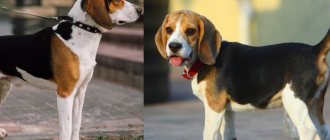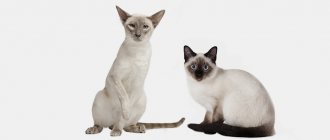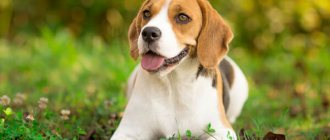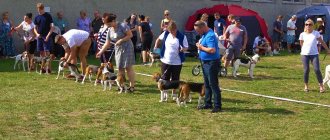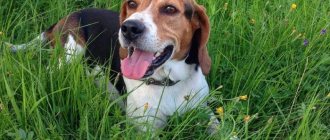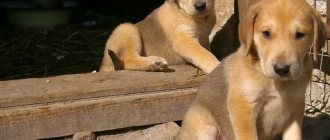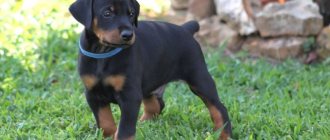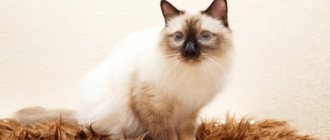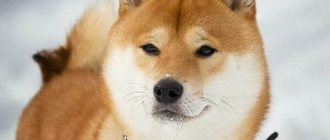Some hunting breeds are very similar to each other. This especially applies to dogs such as the beagle and the Estonian hound, which are similar not only in puppyhood, but also in adulthood. Many unscrupulous breeders take advantage of this similarity, passing off one type of dog as another. Also, many cross these dogs, producing mongrels instead of purebred puppies.
By themselves, these two breeds are excellent hunting dogs with different temperaments and exterior characteristics, which are similar only at first glance. Therefore, anyone who wants to make a friend of this breed needs to study the differences between the Estonian hound and the beagle.
A tale of two breeds
Both breeds are classified as hunting dogs and scent hounds. The Beagle is the oldest breed, which was discovered in Great Britain in the 15th-16th centuries. According to legends, dogs were brought to the country by the Romans, who took these hounds from the Greeks. Dogs were bred to help track hares and other large rodents during hunting. The breed itself was officially presented to the whole world in 1880. It was then that the first nurseries and clubs for breeding beagles appeared. However, since then they began to be bred as an ornamental and family breed. The wide distribution of these dogs began after the end of World War II.
If beagles were raised and developed naturally, without the use of forced selection, then the Estonian hound had to undergo some changes. At the beginning of the twentieth century, Estonia extended a ban on hunting with hounds whose height was higher than 45 cm. This decree was created in order to provide protection to the then endangered roe deer. Therefore, the hunters began to look for a way out of this situation.
Health and life expectancy
Representatives of the breed live 10-12 years . They are distinguished by excellent health and are prone to only a few diseases:
- otitis due to drooping ears;
- arthritis due to heavy load on the joints.
It is important to protect a hunting dog that constantly works in the forest from bites of ticks that carry piroplasmosis and receive timely vaccinations.
Origin of the Estonian Hound
Gathering their strength, they got the state to sponsor a new type of hound dog. One of the founders of this campaign was S. N. Smelkov. It was he who brought several of the shortest beagles straight from England and began crossing them with the same short hounds. These were Russian, Scottish, Finnish, English hounds, as well as Harriers and Foxhounds. The smallest puppies were selected from each new litter. This continued until the new breed of dogs was brought to perfection. Already in 1959, a new breed of dog was introduced to the world - the Estonian hound.
Question of price
Differences also appear in cost. Thus, purebred beagles are sold from 30,000 rubles. The price reaches 60-70 thousand rubles for show class. You can get a puppy for 15-20 thousand rubles.
Estonian hounds are sold cheaper - on average for 15,000 rubles. You can find advertisements with a price of 5-7 thousand rubles.
You can buy beagles in the following nurseries:
- https://www.kennel-beagle.rf – St. Petersburg;
- https://www.beaglevista.com – Moscow.
“Estonians” are bred by the following breeders:
- https://sobaki.pro/index.php?m=Poroda&page=Poroda/Pitomniki&id=Esto&pit=2749 – nursery “Nazoro” in Moscow;
- https://iztsarevshchiny.rf – Samara region.
External differences between dogs
It is very difficult for people who do not understand these two breeds to find the differences between the Estonian hound and the beagle, since the dogs are really similar to each other. However, their exterior data differs. Although not everyone can identify these differences.
According to the RKF breed standard, the beagle is a smooth-haired, small but strong dog of a tricolor color. The dog has an elongated body, a long back and a short loin. His chest is very low. It goes down much lower than the elbows. The beagle's belly is neatly tucked and its neck is long and arched. The dog's limbs are straight, parallel to each other, located under the body and are particularly muscular. The paws are round and the claws are short.
The Estonian Hound is a hunting dog with a larger body and coarse hair. Her body is longer than that of a beagle, and her withers are sloping and protruding. The dog's back is straight, the chest does not fall below the elbows, and the stomach is always slightly retracted. Her limbs, unlike the muscular legs of the beagle, have a dry and bony appearance. The elbows are pressed tightly to the body. The paws are oval-shaped and the claws are quite large, compared to the small claws of the Beagle. The weight of the Estonian Hound ranges from 12 to 25 kg.
The dog's tail resembles a saber as it reaches the hock area. The tail set is medium, so an excited dog will not be able to raise it above the level of the back. Since the Estonian Hound's coat is very hard and thick, it appears thick and large in appearance. The beagle has a tail of medium size and length, straight and without a break. Just like the Estonian hound, it is densely covered with hair. Beagle weight varies from 10 to 18 kg.
Briefly about beagles
Beagles are one of the oldest breeds of hunting dogs: small hounds similar to them appeared in the 15th and 16th centuries. There is no exact information about where they came from, but there are several versions regarding their origin.
Thus, it is believed that the first hounds appeared in Ancient Greece. The Romans, having adopted the experience of using such dogs, brought them to Britain, where they crossed with local breeds for a long time.
According to another version, England had its own breeds of hound dogs even before the Roman invasion, in particular, the famous white hounds of Pwyll, Prince of Wales, who was a contemporary of King Arthur.
Many researchers believe that beagles originated from these dogs.
In the Middle Ages, it was a common custom for dogs to be transported to the hunting ground by placing them in special baskets attached to saddles, which is why small hounds were valued.
Basically, they were then used to hunt rabbits, although beagles can hunt any other small game.
As a breed, they were formed by the middle of the 18th century, but the ancestors of modern beagles were the pack that belonged to Parson Honeywood, who lived already in the 19th century.
The first breed clubs appeared in the 1880s in America. The modern breed standard was approved only in 1957.
The Beagle is a strong and muscular dog of medium size (approximately 33-40 cm at the withers) with short, self-cleaning hair. His head is of noble shape, with a convex forehead and well-defined stop.
The nose is large, the ears are quite long, low-set, falling along the cheekbones.
The muzzle is not narrow, with clearly visible jowls. The body is compact, with a medium-length neck, broad chest, strong back and muscular limbs.
The tail is quite thick, of medium length, set high. When excited it can be raised almost vertically, when calm it can be lowered.
According to the standard, beagles are allowed any color typical of hounds, with the exception of red-brown.
Differences between dogs by coat color
The differences between the Estonian hound and the beagle are quite difficult to determine by their color, since from the outside they do not seem so different. Classic beagles have white fur with black and red spots. The dog can also have a red and white color, badger, white and lemon with red or red splashes. The tip of the animal's tail should be white, regardless of the main color of the coat. Hounds are mostly black and piebald with pronounced ruddy spots. The coat can also have a white background with black, yellow, and red areas. The dog's paws and tail are white.
Difference in character
Reviews from owners about the Estonian hound confirm that the character of this dog is strikingly different from the character of its fellow beagle. The breeds are very similar in temperament, as both are very agile and active. However, beagles are more friendly, energetic and curious. The Estonian Hound is much calmer and more balanced.
While the Beagle will be friendly to all passers-by and family friends, the Estonian Hound will remain neutral, giving its love and loyalty only to its owner and his family members. Beagles look like real Energizers. They try to get in everywhere, attract attention and want to make contact with every living creature in the area. This is the whole character of the beagle. The description of the Estonian Hound breed is completely opposite. This dog behaves with restraint, intelligence and respects subordination, subject to good upbringing. She also vitally needs human attention, but she does not demand it and does not impose it.
This dog owes its character to careful selective work carried out many years ago. Even after a lot of time, she remained an intelligent working hound, able to perform her duties and hunt well. Beagles are more suitable for the role of a pet. The nature of the breed contributes to this. It is impossible to describe beagles without mentioning their charm. It is limitless, and therefore dogs feel great as companion dogs. Of course, their hunting reflexes are developed at the genetic level, but in comparison with Estonian hounds they are significantly inferior in their expression.
Character and temperament
The Estonian is a passionate hunter with a sharp mind. It is noteworthy that malice towards the animal manifests itself only during the hunt, but at home it is an affectionate, calm and gentle favorite. She is ready to carry out the owner’s orders and approaches a person at the first call.
Pros:
- spiteful towards the beast;
- starts working early;
- capable of persistently pursuing an animal while hunting;
- devoted;
- good-natured and affectionate;
- energetic;
- obedient;
- brave.
Minuses:
- prone to hyperactivity;
- sad without work;
- easily picks up the animal's trail and runs away if he walks without a leash.
Attitude towards children and family
The differences between the Estonian hound and the beagle can also be determined by the dogs’ attitude towards family members. Beagles trust everyone. They rejoice at everyone who reciprocates their feelings. Greyhounds from Estonia are more picky and careful in their choice. They always single out one owner for themselves. They will only obey him unquestioningly, but they may ignore the instructions of other family members. The Beagle also gets along better with children. A dog of this breed will be an irrepressible, active and cheerful friend for them, who is always ready to actively play and enjoy life. The dog can chase the little one around the yard for hours and entertain her with his ringing bark.
Based on the description of the Estonian Hound breed, it will not show the same enthusiasm towards a child. This dog always understands that its main task is to hunt, and not to have fun on the lawn. Of course, she will not behave aggressively with children. The hound will never offend them or bite them, but it will also play in rare cases, if the mood is appropriate.
Despite the friendliness and love of games, beagles should not be left alone with such a dog. The dog may start playing and then knock the baby down or accidentally push him.
Content Aspects
You can keep an Estonian hound or beagle in an apartment or in a private house. Semi-aviary housing for “Estonians” is also allowed.
Due to their compact size, they are suitable for any room. At the same time, dogs, active and tireless on the street, turn into quiet couch potatoes as soon as they see a comfortable sofa.
Beagles are closely monitored in the country house. These are famous diggers. Beagles love to dig holes under fences and run away. In contrast, greyhounds from Estonia calmly play in the backyard and do not run away.
Care
Grooming a Beagle and an Estonian Hound is not difficult. Enough:
- Brush the doggies every 4 to 7 days;
- bathe every 2 – 3 months;
- inspect the ears and skin of pets after walks for ticks and injuries;
- weekly remove wax from ears, nitrous from eyes, remove plaque from teeth;
- once a quarter, treat pets from blood-sucking parasites and helminths;
- vaccinate on schedule.
Dogs shed moderately in spring and fall. During this period, they are combed every day.
Beagles and Estonian hounds are clean, their coat does not get wet, repels dirt and cleans itself. However, like all hunters, dogs love to roll around in “fragrant” rotten meat.
In the house where a hunting dog lives, you cannot store or use perfumes, aromatic oils and candles, air fresheners, varnishes, paints, etc. Strong odors from household and cosmetic products irritate the olfactory receptors and impair the sense of smell.
Feeding
Estonian hounds and English beagles are unpretentious when it comes to food. There are no differences in diet for both breeds.
Dogs are fed a balanced diet based on lean meat or ready-made holistic or super-premium food, or, in extreme cases, premium food. You cannot mix food types.
Health
"Estonians" and English greyhounds are generally healthy dogs. True, there is a difference in life expectancy: the former live up to 11-13 years, while the average age of beagles is 12-15 years.
Common diseases include:
- otitis (long, drooping, tight-fitting ears - an ideal environment for bacterial or fungal infection);
- adenoma;
- cataract;
- glaucoma;
- iris dysplasia.
Typical diseases of beagles are epilepsy, intervertebral hernia, hepatic colic. The Estonian Hound is characterized by arthritis, joint dysplasia, congenital blindness and deafness.
Walk
Both breeds are active. They need long, vigorous walks, games and activities that exercise their muscles and brain.
Estonian hounds are more demanding. If beagles have adapted to the role of companions, then for hounds life without hunting is meaningless.
Dogs' attitude towards strangers
Comparisons between the Estonian Hound and the Beagle are easy to make on the street. During a walk, the differences between these dogs appear very clearly. The beagle will happily wag its tail at every passerby. He runs up to all people, animals and children without fear. He craves attention and simply loves when it is given to him. A dog of this breed will undoubtedly go for any treat or toy that is lured to it. That is why beagles need to be trained from puppyhood so that they react as little as possible to passers-by and follow the owner’s commands. Such a dog is quite easy to steal because of his gullibility and thirst for communication. Therefore, you should not let your beagle off the leash in crowded places.
The difference between the Beagle and the Estonian Hound lies in the innate intelligence of the latter. The Hound is guided by manners and is therefore very calm and alert. A dog of this breed will never run towards anything living or interfere with passers-by. There is nothing a stranger can do to attract or interest her. No treat or toy can cloud her mind. Many people love this breed precisely for its innate sense of caution and restraint.
Pros and cons of the beagle
Pros:
- Not aggressive towards other dogs or people.
- Loves children.
- Affectionate and devoted.
- Cheerful and playful.
- Can keep company even on a multi-day hike.
- His coat is easy to care for.
- Unpretentious in feeding and keeping conditions.
- With proper training it can become a good hunting dog.
- Despite its small size, it is strong and durable.
- He is in good health.
Minuses:
- Stubborn and self-willed.
- Can't stand loneliness.
- Big manipulator.
- Not suitable for inactive people.
- Trusting of strangers...
- He loves to eat.
- Needs long walks.
- Prone to escape.
- Some beagles may bark and howl when left alone.
- It is not suitable for a child under seven years old, as he simply will not be able to cope with such an active and strong dog.
Beagles can only be let off leash in enclosed areas, otherwise they may run away.
Dogs and other pets
Both breeds perceive other pets only as prey. Therefore, it is not advisable to get another animal. They will chase any cat, hamster, or parrot and dream of killing it as a victim. The only difference between the two dogs is that a beagle can be trained to be wary of another type of animal, while a hound cannot. If a beagle lives in the same room with a cat from birth, then he will be able to imagine her not as prey, but as a friend. The Estonian hound, even in puppyhood, will hunt for any small animals, since its instincts are more developed than those of the beagle.
Comparison on different aspects
Activity
Both beagles and Estonian hounds are very active. These are very energetic dogs that require a lot of physical activity.
Trusting strangers
Beagles tend to trust everyone, they happily run up to the call of strangers, which is why they are often stolen. The Estonian Hound does not show aggression towards people, but at the same time it will not run up to a stranger who calls it.
Feeding
Representatives of both breeds are undemanding when it comes to feeding. But in order for a dog to be healthy, it needs to be fed either high-quality premium food or higher, or complete natural food.
All attempts by your pet to beg should be stopped, otherwise the dog may develop obesity.
Health
Both beagles and Estonian hounds are strong and healthy dogs that rarely get sick. But because their ears completely block the ear canal, representatives of both breeds can experience otitis media.
Domination
The Beagle is stubborn and self-willed and at a certain age may try to start fighting for the place of leader. The Estonian Hound has a softer character and is not too prone to dominance.
Protection
The Beagle cannot be called a good protector, as he is very trusting of strangers.
The Estonian Hound is wary of strangers, although without aggression, and, in general, can scare away a stranger with a loud bark.
Attitude towards children
Representatives of both breeds are good with children (shown in the photo). But it is better not to buy them for children under seven years old, as an overly active pet can knock the child down during play.
Attitude towards other animals
Both beagles and Estonian hounds do not get along well with other animals in the house, especially if they are rodents or cats.
Devotion
Both dogs are distinguished by great devotion and affection.
Training
The Beagle is intelligent and quick-witted, but due to the fact that he is often distracted during training, the process of training him may not be the easiest.
The Estonian Hound is also very intelligent and people-oriented, so it is not too difficult to train.
When training an Estonian hound, you need to take into account that this dog is very smart and cunning, and therefore only an adult family member should teach it commands.
Dog training ability
The Estonian Hound responds very well to training if done as early as possible. From about two to three months, it is necessary to gradually begin teaching commands, increasing the intensity of training based on age. The dog has good perseverance and memory. She quickly remembers all the commands and is great at demonstrating them. The Estonian Hound loves to learn, but hunting skills will take quite a long time to develop, practicing them in practice. Therefore, if using a dog for hunting is not a priority, it is better not to fill the dog’s head with unnecessary knowledge.
Beagles, unlike Estonian hounds, are very restless. It will be difficult to teach them commands, since the dog does not like to sit still. She constantly runs, jumps, plays and tries to provoke her owner into action. To train a beagle well, you will need a lot of patience. If the owner does not have it, it is better to leave it to the dog handler. If you neglect to train your dog, it will become uncontrollable both at home and on the street.
Comparison of working qualities of dogs
Despite their predisposition to hunting, in fact, dogs differ strikingly in their working characteristics. Estonian hounds love to hunt animals such as hare, lynx, and fox. They can also perfectly track roe deer, small wild boar and birds. Many hunters who use this breed to catch prey argue that a hound cannot be trained to search for animals by following hoof tracks.
It is much easier to pick up than a hare's trail. In the future, a dog accustomed to this method will hunt only ungulates. Beagles are excellent at hunting hares, rabbits and other large rodents. They will not be able to handle prey larger than them, unlike Estonian hounds. The latter love to track and drive prey on their own. But beagles prefer the pack method of working.
Education and training
The Estonian Hound is easy to train and quickly grasps the rules of behavior in the human and canine world. She is sociable, and even a beginner can handle her training. Avoid punishing your dog harshly and socialize it on time.
While eating, practice calling: signal the Estonian puppy with a hunting horn, and when he comes running, feed him. This ability to respond to the sound of a horn will make subsequent training easier.
The puppy will have to go through a training - a type of dog training. It is practiced under the guidance of a specialist or independently when the puppy is 8-9 months . The hunt is carried out early in the morning in September along the black trail, when the tracks of the hare going to bed are still fresh.
The dog, quickly reaching the animal, will pick it up and chase it. The hounds are not immediately sent out to search (crawl): wait 2-3 minutes at the edge of the forest, and then release the dog. Having raised the beast, she must drive it with her voice. If the dog has lost the animal, then the hunter must help find it by tapping the bushes with a stick to scare the animal away, and then send the dog on the trail. The more training is done, the less the hunter helps.
In addition to hunting, the Estonian will easily become a sports dog : she will enjoy running with her owner, agility, freestyle, frisbee, and cycling.
Owner reviews about dogs
Based on the reviews of those who own these two breeds, we can conclude that each dog should be selected depending on the character of the owner. People who have a beagle as a pet are active and cheerful individuals who feel the need for the same dog. They note that the beagle makes their life more fun, joyful and energetic. With such a dog they are never bored.
The Estonian Hound is a devoted, persistent and faithful friend who will feel his owner and adapt to his life. The owners of these dogs claim that a more reliable dog than the Estonian hound cannot be found. This breed is very popular with calm, reasonable people. They note that with such a friend they feel comfortable anywhere, because due to their disposition, the Estonian Hound is perfect for people who travel frequently.
How to choose a puppy
Before choosing a beagle puppy, you need to decide on the choice of kennel. You should not agree to cheap offers “from hand” and “on the market”. A specialized nursery and a competent breeder are a guarantee of the purity of the breed and the health of the baby. You can choose a nickname for your beagle after purchasing a puppy.
It is best to adopt a beagle baby between the ages of 2 and 2.5 months. At this age, the puppy is ready to adapt to the existing hierarchy. An older puppy will try to adjust everything to suit itself.
Usually, “their” puppy is found at the very first visit to the nursery: friendly, charming and curious kids themselves find their way to the owner’s heart.
It is worth observing the mother: many of her qualities and manners will be passed on to the kids.
A healthy little beagle is active, curious, and ready to socialize. He plays, runs, enjoys meeting people, and is not afraid of people.
A male Beagle is usually larger than a female Beagle. Girls are softer, but also more cunning than boys.
